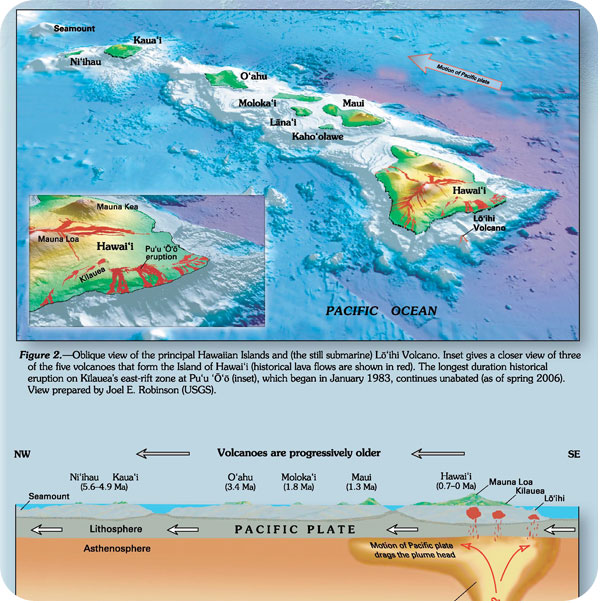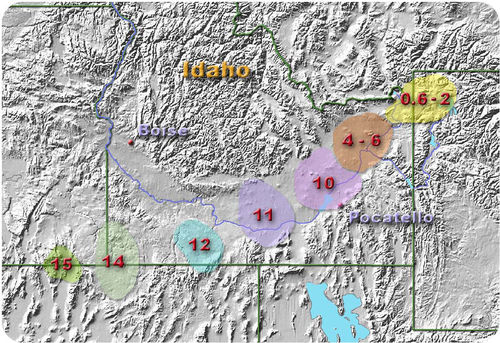33 Hot Spots
In geology, the places known as hotspots or hot spots are volcanic regions thought to be fed by underlying mantle that is anomalously hot compared with the surrounding mantle. They may be on, near to, or far from tectonic plate boundaries.
Currently, there are two hypotheses that attempt to explain their origins. One suggests that they are due to hot mantle plumes that rise as thermal diapirs from the core-mantle boundary. An alternative hypothesis postulates that it is not high temperature that causes the volcanism, but lithospheric extension that permits the passive rising of melt from shallow depths. This hypothesis considers the term “hotspot” to be a misnomer, asserting that the mantle source beneath them is, in fact, not anomalously hot at all. Well known examples include Hawaii and Yellowstone.
Background
The origins of the concept of hotspots lie in the work of J. Tuzo Wilson, who postulated in 1963 that the Hawaiian Islands result from the slow movement of a tectonic plate across a hot region beneath the surface.
It was later postulated that hotspots are fed by narrow streams of hot mantle rising from the Earth’score-mantle boundary in a structure called a mantle plume.

Whether or not such mantle plumes exist is currently the subject of a major controversy in Earth science. Estimates for the number of hotspots postulated to be fed by mantle plumes has ranged from about 20 to several thousands, over the years, with most geologists considering a few tens to exist. Hawaii, Réunion, Yellowstone, Galápagos, and Iceland are some of the currently most active volcanic regions to which the hypothesis is applied.
Most hotspot volcanoes are basaltic (e.g., Hawaii, Tahiti). As a result, they are less explosive than subduction zone volcanoes, in which water is trapped under the overriding plate. Where hotspots occur in continental regions, basaltic magma rises through the continental crust, which melts to form rhyolites. These rhyolites can form violent eruptions. For example, the Yellowstone Caldera was formed by some of the most powerful volcanic explosions in geologic history. However, when the rhyolite is completely erupted, it may be followed by eruptions of basaltic magma rising through the same lithospheric fissures (cracks in the lithosphere). An example of this activity is the Ilgachuz Range in British Columbia, which was created by an early complex series of trachyte and rhyolite eruptions, and late extrusion of a sequence of basaltic lava flows.
The hotspot hypothesis is now closely linked to the mantle plume hypothesis.
Hotspot volcanic chains
The joint mantle plume/hotspot hypothesis envisages the feeder structures to be fixed relative to one another, with the continents and seafloor drifting overhead. The hypothesis thus predicts that time-progressive chains of volcanoes are developed on the surface. Examples are Yellowstone (Figure 5), which lies at the end of a chain of extinct calderas, which become progressively older to the west. Another example is the Hawaiian archipelago, where islands become progressively older and more deeply eroded to the northwest.

